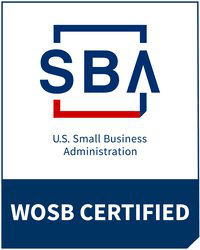Immunohistochemistry Cell Climbing Slide
IHC-C
Immunohistochemistry (IHC) is an assay typically used to detect antigens, via labelled antibodies, in biological samples. It can be used to analyse the distribution, abundance and localisation of proteins, glycans and other small or non-biological molecules; such results offer insight into cellular structure and mechanisms. There are two detection methods for immunohistochemistry: colorimetric and fluorescent. Fluorescent detection uses fluoresence-labelled antibodies, and the method is more commonly referred to as Immunofluorescence (IF). Colorimetric detection uses enzyme-conjugated antibodies that produce a coloured precipitate.
See below for a general protocol for the immunohistochemistry staining method SABC (Strept Avidin Biotin-peroxidase Complex), for cell climbing slides. Streptavidin labels the target protein through the combination of its carboxyl and the amidogen of the protein. It has high sensitivity and low non-specific binding to tissues and cells, resulting in very low background.
A. Preparation
- PBS
- 4% Paraformaldehyde
- 30% H2O2
- Methanol
- Compound digest solution
Sample Preparation
- Remove coverslip from well plate using tweezers, wash with PBS 3 times to remove culture medium.
- Immerse coverslip (cells face up) into 4% Paraformaldehyde for 10-20 mins (close lid to prevent volatilisation). Wash with PBS 3 times.
- Place coverslips onto filter paper (cells face up), remove liquid and allow to dry for 8-10 hrs. Note: Cell climbing slices can be stored at -20 ℃ for 1 week. To thaw slice, wash with neutral PBS at room temperature for 10-15 mins.
Inactivation
- Prepare a 1:50 solution of H2O2 in methanol (mix one part H2O2 with 49 parts methanol).
- Immerse cell slice into solution at room temperature for 10 min.
- Wash with distilled water for 1 min, 3 times.
Antigen Retrieval (optional)
- Enzyme digestion: Use filter paper to dry extra distilled water upon cell slice. Add 0.1% Triton and incubate for 10 mins, and wash with PBS for 10 min, 3 times. Add compound digest solution and incubate at room temperature for 3-5 mins. Wash with PBS for 5 mins, 3 times.
B. Protocol
- PBS
- 1% Triton X-100
- 5% BSA blocking solution/goat serum
- DAPI
- Antifade mounting media
- Primary Antibody
- Conjugated-Secondary Antibody
- SABC reagents
- Add 5% BSA blocking solution or normal goat serum and incubate at 37 ℃ for 30 mins with shaking.
- Dilute primary antibody in blocking buffer. Incubate at 37oC
- Wash with PBS for 20 min, 2 times. Add labelled (enzyme- or fluorophore conjugated) secondary antibody and incubate at room temperature in the dark for 1-2 hrs. Note: When using any primary or fluorochrome-conjugated secondary antibody for the first time, titrate the antibody to determine which dilution allows for the strongest specific signal with the least background for your sample.
- Wash with PBS for 20 mins, 2 times. Add SABC reagents and incubate at 37 ℃ for 30 mins. Wash with PBS for 20 mins, 3 times. Note: Prepare solution by mixing 1 ml distilled water with one drop of Reagent A, B, C.
- Incubate at room temperature as per instructions.
Counter-staining (if required)
- In preparation for ‘counterstaining; with IB4/DAPI or GFAP/DAPI, incubate the sections in PBS with Ca2+, Mg2+, and Mn2+ and 0.1% Triton X-100 for 15 mins. Rinse the slides through a quick change of PBS.
- Incubate slides in 1:10,000 DAPI for 30 min. Wash slides in PBS for 2 mins, 3 times.
- Prepare antifade mounting media according to directions. Allow the slides to dry approximately ¾ to completion. Place the coverslip taking care to remove any bubbles formed beneath the coverslips.



